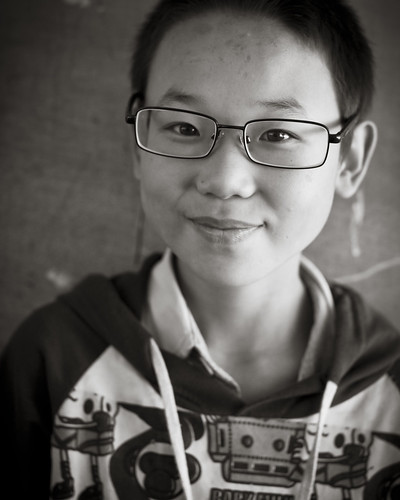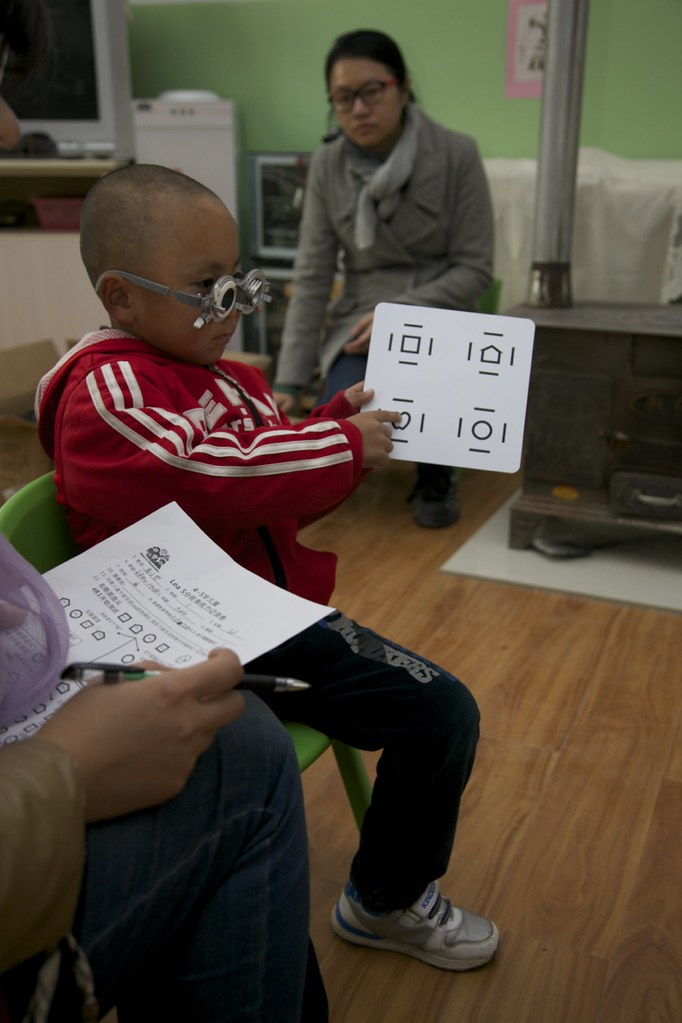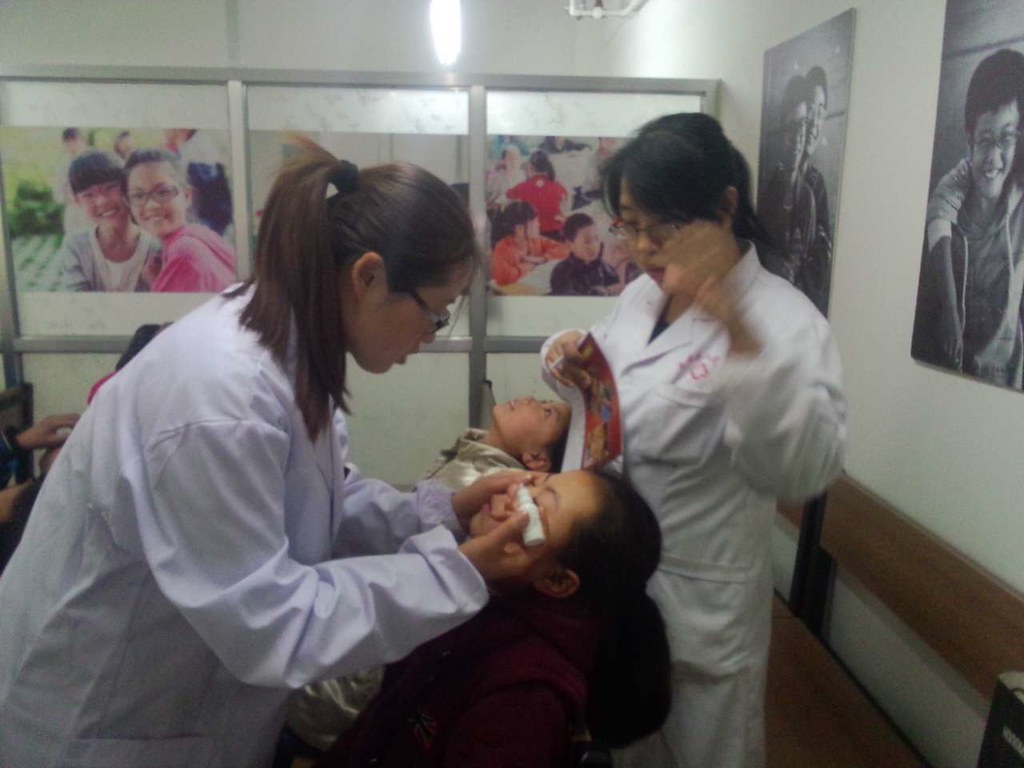Smart Focus
 |
A Social Enterprise Delivering Hospital-based Vision Care for China’s Rural Schools
There are 30 million primary school children in rural China that cannot see properly because they don’t have glasses. If you include middle school children, the tally leaps to 50 million—all suffering from easily correctable vision loss.
Like nearly all rural children in China, these nearsighted youngsters lag more than two years behind in academic achievement compared to their urban peers. This persistent achievement gap has implications for China’s continued economic growth, as vast numbers of rural youth grow up unprepared to compete in the labor market of an increasingly modern economy.
Yet one simple action—placing eyeglasses on a nearsighted child’s face—can erase as much as half of this achievement gap over the course of only one academic year. Still, today only 16 percent of nearsighted children have glasses, making uncorrected vision the single largest pediatric health problem in China.
As an innovative social enterprise, “Smart Focus” aims to solve the rural vision care crisis—and do so sustainably. We are confident that in just a few years we can eliminate uncorrected vision in rural China for good.
Five Randomized Trials, Five Key Lessons
Since 2011, REAP has conducted five randomized controlled trials to better understand the extent and implications of China’s rural vision care challenge. Five key lessons have emerged:
- 6/7 rural children with poor vision don’t have glasses.
- Wearing glasses provides a major boost in schooling outcomes for children with poor vision.
- After a half-day of training, rural teachers make good screeners (using an E-chart), and can supervise glasses wear.
- First time care for rural children must be free (or close to free) for rural households to partake.
- In the hospital of an average rural county, three properly trained optometrists with key equipment can accurately correct about 95 percent of vision problems.
Smart Focus was established to put these lessons into action and solve China’s vision care crisis.
 |
What about the private sector? Can’t private opticians do the job?
Private opticians have been active in rural China for a generation and still have not been able to meet the needs of rural communities. We firmly believe that they will not do so anytime soon, either. Here’s why:
- Schools will not let a private (often non-local) entrepreneur screen their students.
- Private optometrists are not well regulated, and they are often undertrained.
- Private optometrists are not permitted to dilate children, a necessary step for high quality refraction and diagnosis of myopia.
A Social Enterprise solution
Based on the lessons of REAP’s research, Smart Focus built pilot vision centers in two county hospitals. The goal of these pilots was to operate sustainable model vision centers. They would provide high quality vision care for rural primary school children for free while also making a profit for the county hospital by providing care for urban children in the county seat.
After one year, the pilot vision centers have succeeded where the private sector failed. During the 2014-15 academic school years, they provided vision care to thousands of rural children that would otherwise not get it, while at the same time earning a profit.
The key to the success of Smart Focus lies in harnessing three essential players:
- The Zhongshan Opthalmic Center, the best ophthalmology hospital in China, provides optometry training to vision center staff
- The County Hospital provides staff and a site for the vision center
- The County Education Bureau arranges local teachers to screen and refer students.
What is our comparative advantage?
1) We have access to the schools and teachers: Having access to both rural and county schools is the keystone of the entire enterprise. This allows us to organize screening and referrals on a large scale (through teacher training) and get our patients in the door. No private optician shares this level of access.
2) We are the public sector: The fact that the Vision Center is based at the county hospital (not a street-side storefront) further reinforces public trust.
3) We can dilate: Dilation is required for properly prescribing glasses to young children. In China only medical professionals can dilate, not private opticians. That means we can provide this key service that our competitors cannot.
 |
This goal is surprisingly close to becoming reality. A new vision center can recoup all upfront investment and earn a modest profit during its first three years (including covering all of the expenses of the vision operations). Profits rise dramatically in year four once all upfront investments are paid off. The costs of Smart Focus are all also covered.
Here’s how it works:
Step 1: Smart Focus (in collaboration with the county hospital) outfits an appropriate space in the county hospital and provides required equipment
Step 2: Smart Focus arranges training in optometry and vision center management for three staff members (in collaboration with Zhongshan Ophthalmic Center)
Step 3: A Smart Focus Manager is placed at the vision center to coordinate Vision Center (VC) construction and staff training, and later manage relations with the education bureau, hospital, and suppliers
Step 4: VC optometrists train teacher-screeners in local townships in a monthly rotation
Step 5: Vision Center gives away “First Pair Free” glasses to referred rural children, while also providing refraction and eyewear on a fee-for-service basis to a fraction of the urban market (and for rural junior high school students). Giving away “First Pair Free” is not ‘just charity’ – it builds access to the huge and untapped rural market.
Step 6: The VC repays Smart Focus’ initial investment in monthly installments
Step 7: After three years the VC has paid off the entire initial investment (equipment; renovation; training; free frames/lenses; Smart Focus costs). The VC is in the black during the first three years.
After year three, profits rise, the VC takes on all aspects of management.
Smart Focus has all the resources to make this happen:
- Trust of local governments and hospitals
- Strategic partnership with Zhongshan Opthalmic Center
- Educational materials for students and parents
- Links to high quality eyewear wholesalers for low cost purchases
- Experience running vision centers in rural contexts
- Seasoned Focus Managers ready to deploy and help launch a vision center
With these assets, Smart Focus makes sure that high quality screening, refraction, and eyewear reach all children who need them. We call this the Four-Win Solution:
Win 1: Rural children receive one-time essential vision care for free
Win 2: The school system sees improvement in rural education at virtually no cost to schools (8 hour training for one teacher per year)
Win 3: Hospitals gain a new revenue stream
Win 4: The county government gets credit for solving a key health issue
Following the success of our two model vision care counties, we are working to expand this model across rural China. We anticipate high interest from county hospitals, who can make money using this system. At a meeting in May, we presented the idea to officials from 18 additional rural counties, and are now taking the next steps toward implementation.
About our research initiative, Seeing is Learning, that informed the establishment of Smart Focus.
